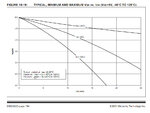AliRazoR
Advanced Member level 4
Hi,
Can we use any transistor to drive 7 segment with PIC16F877?
i am using BC107 NPN transistor to turn on and off seven segment but i do not know the reason!
for example is it possible to use 2N3904?
thanks in advance.
Can we use any transistor to drive 7 segment with PIC16F877?
i am using BC107 NPN transistor to turn on and off seven segment but i do not know the reason!
for example is it possible to use 2N3904?
thanks in advance.

